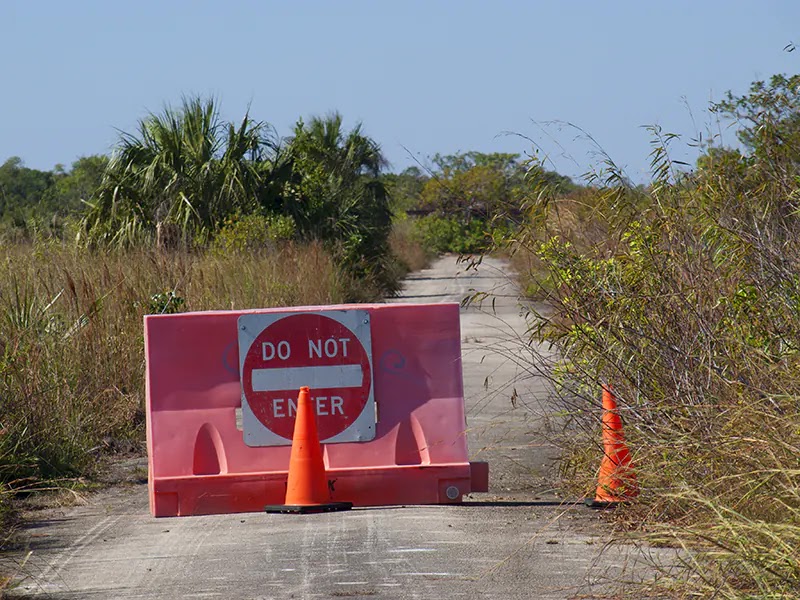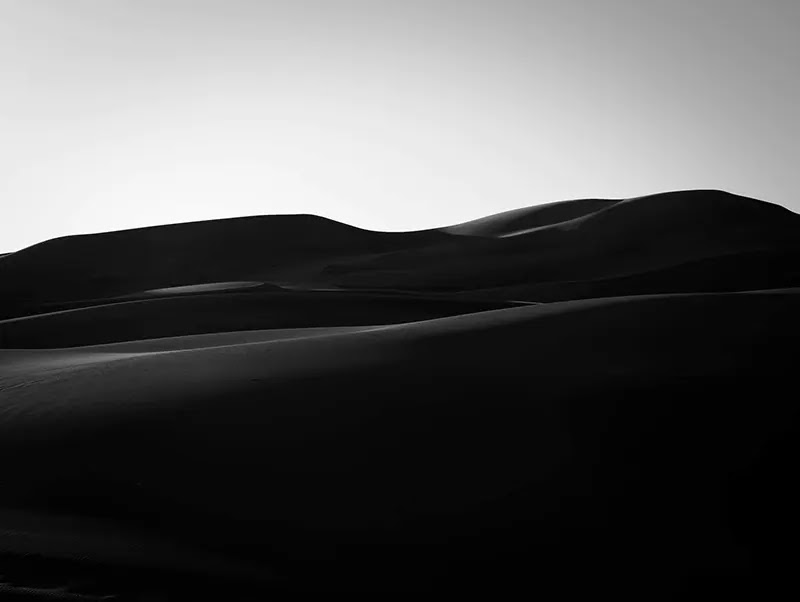Bodie Ghost Town: In “the most dangerous place in the West” - Multiple photos

|
| At the end of the paved road in the route to Bodie - License our images here. |
Bodie is the most famous ghost town of the old West. It was and still is a remote place. Nothing changes here, same rugged climate, same dirt road, and same unforgiving wilderness. And worse, the region seats on an active magma chamber, so we can say that Bodie always was close to Hell.

|
| Driving on the old dirt road of Bodie. |
Well over the tree line, at 8,000 feet elevation, Bodie offered a rustic life full of hardships to its dwellers. The closest lumber supply was miles away, right on the shores of Mono Lake. Today there are still plenty of Jeffrey pines around there.
But gold was plenty around Bodie and it made all the difference. Many came to the hostile region after the shiny stuff.

|
| Entering the ghost town. |
Before the town this was the land of the Kuzedika - also known as Kucadikadi. The name means "fly-larvae eaters", and that's what they literally did on these highs. They lived in the area between Mono Lake and Walker Lake in Nevada.
The town of Bodie began with W. S. Bodie - or Body… or Bodey - nobody is sure.
For some, he was a simple tinsmith from Poughkeepsie in faraway New York. But he was a man with a heart for risk and adventure and traded his eastern security for the uncertainty of the wild West. Others say that Bodie was a Scottish immigrant coming from New York. But for the residents of the town of Bodie the real man was always a mystery.
These were the times of the California Gold Rush and Mr. Bodie was so lucky that found gold in 1859. News got out and more came dreaming to become rich. Some miners went further to the east and claimed mines in Aurora, Nevada - another ghost town today.
But fortunes come and go - that’s why the Roman goddess Fortuna was often depicted blindfolded. W. S. Bodie froze to death the winter of the same year of finding gold. Gold makes you rich but doesn’t control the weather and snowstorms are unpredictable in these high places. On the bright side, his friends named the town after him. Not that this made a difference for our poor Mr. Bodie.

|
| Cain's home now houses the park rangers. |
Today the remains of the town of Bodie are a historic park where rangers fight a lost war against time. They try their best to keep the surviving buildings in "arrested decay" - a fancy words for preservation. In general, Bodie is in the same state that it was left when abandoned. This is good. No fake shows on the style of Disney around here.
The Red Cloud Mine is the first thing by the parking lot. Two rusty elevators and scattered mining tools lying around. A marker says that Bodie was "the most thriving metropolis of Mono country". Thriving metropolis? Not the first thing that comes to mind looking at the remains.

|
| Bodie and the mines in the background. |
Close to the Red Cloud Mine - on Bodie Road - there is a house that was owned by a Chinese resident. A Chinese here? Not one, there was a whole "Chinatown" in Bodie by the 1870s. Of course, it didn’t compare to the ones in New York or San Francisco, but anyway, Bodie had its Chinatown.
Chinese immigrants came to work here and settled around King Street towards the outskirts of the town. The immigrants couldn’t afford to live close to the action of Main Street. There was discrimination against the Chinese workers in Bodie and there was also opium in the Chinatown.

|
| Boone Store, Main & Green Streets, Bodie. Historic American Building Survey - Library of Congress. |
The surviving house was from Tong Sing Wo. This man was a boss among his people and owned a merchant shop that dubbed as a gaming hall. A curious detail is that the Chinese were the first to have a house of worship in Bodie. This happened in 1880.

|
| The Methodist Church of Bodie. |
After crossing the Dolan House on Green Stret - this was a sheriff killed by outlaws near Mono Lake -, we stopped at the Methodist Church. This place is well preserved. Everything looks like frozen in time.
Bodie survived two decades without a place for worship and this may explain why a reverend described the old town as a "sea of sin". But Bodie got two Christian churches in 1882. One was Protestant, the other Catholic. They opened a week apart from each other in a cold month of September - Was this by agreement or competition?

|
| The Methodist church of Bodie. Historic American Buildings Survey - Library of Congress. |
Churches were great additions to "the most dangerous place in the West". No doubt that spiritual counseling was in high demand in this town. Everybody hoped that the word of God would help to control the arguing and fighting of miners in the bars of Green Street.

|
| Interior of the church. |
The outside press never felt in love with Bodie. The town only was good source of material for sensational stories and the journalists - like today - always focused on the bad side of life.
A newspaper of San Francisco published a story called "The Bad Man from Bodie" that pictured the town as a lawless place. Another article quoted a little girl moving with her family from Truckee to Bodie as saying:
Goodbye, God. We’re going to Bodie!
Bodie's newspapers disputed the account as a misquote, but the "public relations" damage was done.
Honoring the truth, Bodie was a genuine "shooter town". Or at least reports of the 1880s suggest that - like this one from the Reno Gazette-Journal.
Gold, guns, saloons, gambling, and few churches were the perfect recipe for violence. Like travel writer Paul Theroux said once, cities are "snake pits", and Bodie has plenty of snakes and became a magnet for rotten apples.

|
| Main Street fire station. |
Downtown Bodie had many hotels. Three are gone and three still survive. The ones that burned were The Grand Central, the Occidental, and the US Hotel. The last one was the biggest building in town—check this photo. The survivors in the time we visited were the Swazey, the Dechambeau, and the Wheaton & Hollis Hotel.
Even if Bodie had four fire stations, it never beat the flames in this dry climate. Only one fire in 1892 took out sixty-four buildings.
On Main Street, topped by a bell, survives one of the fire stations and across it the ruins of The Bodie Bank.

|
| The Bodie Bank. Historic American Buildings Survey - Library of Congress. |
This bank was owned by a Canadian named James Stuart Cain since 1890.
Curiously, the wooden jail of Bodie wasn’t destroyed by the fires. Built in 1880, it was known as the Hotel de Kirgan after the jailer. There was space for 16 inmates. The shack didn't look appealing or safe to keep violent criminals secured.

|
| The jail of Bodie. Historic American Buildings Survey - Library of Congress. |
Three newspapers kept the town in tune with the outside world. They were The Bodie Chronicle, Daily Bodie Standard, and Daily Free Press. Old ads show that businesses were booming in town - check an image of The Bodie Chronicle here.

|
| The mines of Bodie on the hills. |
Gold was the blood of the town and Bodie's economy ran around the mines. Get the idea from this map of the Bodie Mining District during its boom.

|
| Compilation from records and surveys. It was published by The Mining Record in New York in 1879 - Public Domain. |
In their best times, the mines produced a lot of money. Bodie’s mining stocks traded in the San Francisco Stock Exchange in 1880. In those years, it's said that the town got a population of ten thousand. They even completed a railroad to Mono Mills to easy the transportation of wood.

|
| Bodie railroad station. Historic American Buildings Survey - Library of Congress. |
On a slope of Bodie still stands the massive Standard Mill. This building was owned by the major company in town: The Standard Consolidated Mining Company. You need to take a tour to visit the place. Never wise to allow people wandering alone through a decaying industrial facility.

|
| Business buildings in Bodie. |
But good luck never worked in Bodie and four years after the boom many mines closed. The town population shrank to 1,500 souls and many buildings went for sale or for rent.
A miner claimed his due salary through the barrel of his revolver. In the extremes, some teared down abandoned buildings to sell the wood. From this point on, everything went in a downfall spiral with occasional sparks of hope for a renaissance here and there. Some folks tried to resurrect the mining town without luck - again, no good luck in Bodie.

|
| Map of Bodie from Sanborn Fire Insurance, 1890 - Library of Congress. |
The railroad of Bodie stopped operations in 1917 and fifteen years later the "Great Fire" destroyed most of the town. With the advent of WW2, the US government ordered the shutdown of all mining operations and Bodie died.
The ghost town endured strong winds, coldness, and solitude for two decades until the state parks of California came to the rescue in the 1960s - you must experience the creepy sounds of the wind through the cracks of the surviving buildings while walking in this place.

|
| The decaying interiors of Bodie. |
Hungry and tired of walking through Bodie, we left the town close to the sunset. We thought of boondocking nearby, but after learning of the spirit of a Chinese maid in Cain’s house and the ghostly parties in Mendocini’s home… No, thanks! Nights are a little crowded in Bodie for our taste. Better to go down to the windy shores of Mono Lake.
Now, a piece of advice for you: Take nothing from Bodie! Only photos! Why? Because there is a curse, and it will follow you wherever you go. Just google "the curse of Bodie" and learn about this. Never play around with ghost towns. You never know.



Comments
Post a Comment